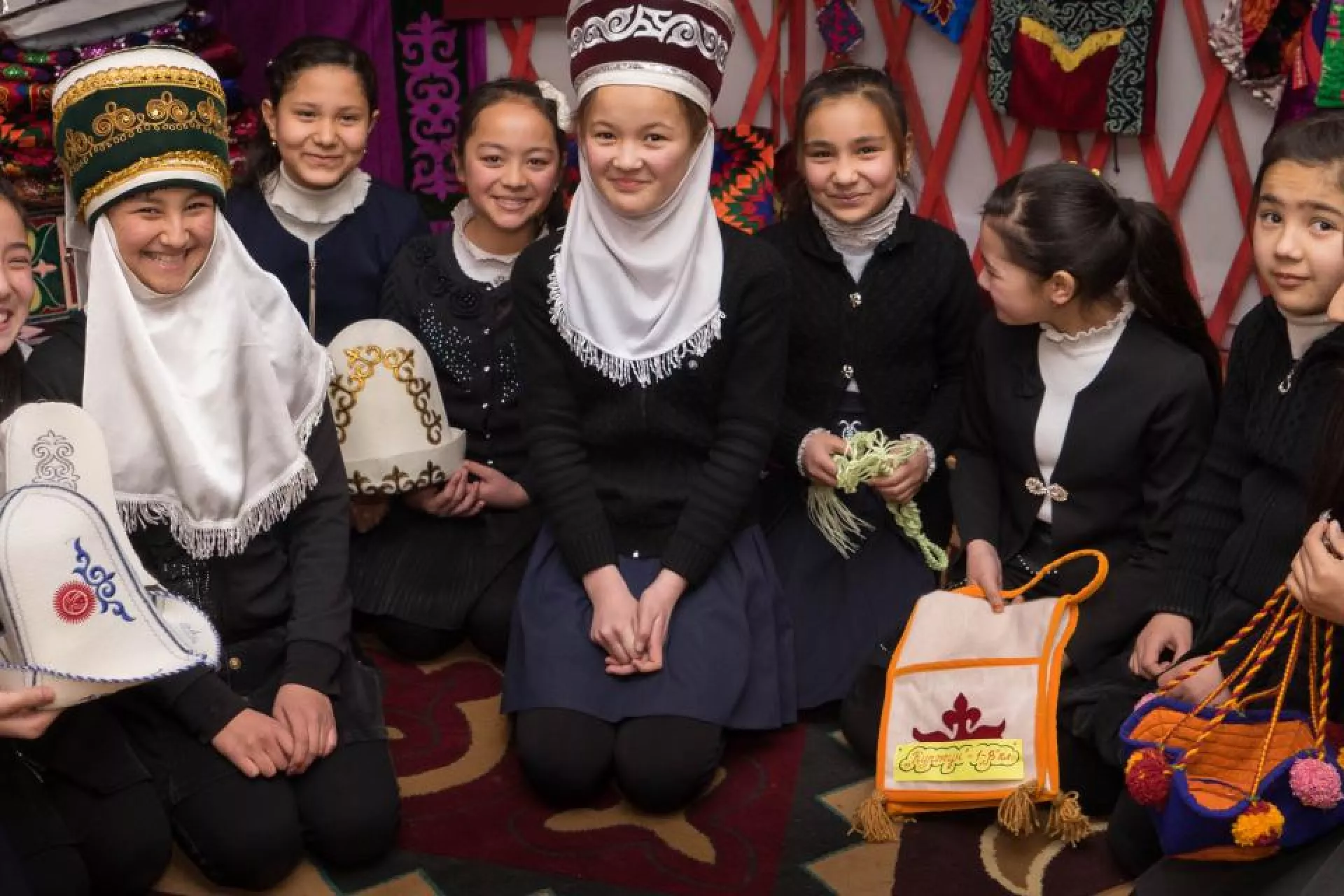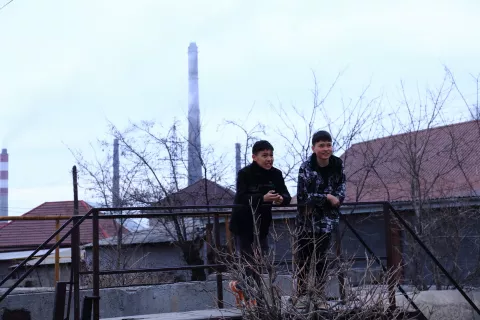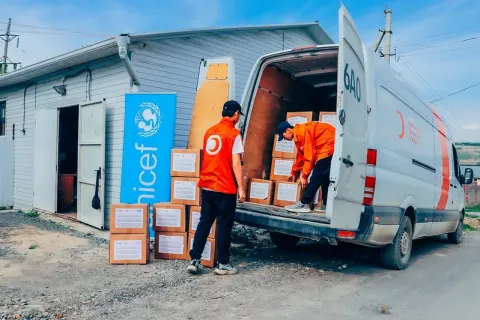In south Kyrgyzstan, multilingual education is path to opportunity and inclusion
‘We did have difficulties understanding Kyrgyz and Russian in the beginning, but it’s good now’, says Nazima (12).

Having biology, history, and other subjects taught in three different languages might seem like too much of a learning challenge. But students at this secondary school in Kyrgyzstan’s southern city of Osh are tackling the challenge, and asking for more.
‘We did have difficulties understanding Kyrgyz and Russian in the beginning, but it’s good now’, says Nazima (12). ‘When we started two years ago, it was very difficult, but now it’s not a problem’, confirms Muhtazar (13).
All students in their 7th grade class, and practically all students at their school, speak Uzbek as their mother tongue.
Gymnasium No. 8 named after Gorkiy is one of five preschools, 56 schools and two universities in Kyrgyzstan where the Ministry of Education and Science, with UNICEF support, is piloting multilingual education.
Target languages
There are altogether 41 classes at the school, and 14 of them are part of the program. ‘Multilingual’ here does not mean having a lot of language classes; rather, teachers use more than one language in each class teaching regular subjects.
For example, a class may be divided in three parts, and the most challenging part – for example, when new concepts are introduced – is taught in the students’ mother tongue while the other parts are taught in the ‘target languages’.
At this school, the target languages are Kyrgyz and Russian. In some classes, there is particular emphasis on one of them: ‘For example, we have our geography classes mostly in Russian, and history mostly in Kyrgyz’, explains Muhtazar (13).
In Kyrgyzstan, Kyrgyz is the state language, while Russian has the status of official language. Not knowing either of these two languages well will restrain young people’s future opportunities in education and work.
Key to integration
In 2010, Kyrgyzstan’s south saw clashes between ethnic Kyrgyz and Uzbeks, with several hundred people killed and over 200,000 displaced. The unrest was centered on the city of Osh. Since then, a successful peace recovery has led to relative political stability. Nevertheless, the political situation remains precarious.
UNICEF Kyrgyzstan, with funding from the UN Peacebuilding Fund, has made multilingual education one of the pillars of its efforts to foster a strong, inclusive peace in the country. Improving minorities’ knowledge of the state language is key to enabling deeper integration in society.
A relatively large proportion of Kyrgyzstan’s Uzbek ethnic minority, making up some 15 per cent of the population nationally, live in Osh province and neighboring Batken province.
The multilingual classes commenced in 2015, after teachers had been preparing for a full year to integrate subject and language learning. This school had expressed a strong desire to participate in the pilot project.

Fear of the future
Before deciding to participate, the school consulted with all parents and children, explains Hidoyat Abylkasimova, one of the teachers:
‘We found that both parents and children were very eager to learn. It wasn’t merely a wish, but a need to gain a better education, to secure a better job in the future. Everybody here have fear of the future, so they were very positive.’
So why did the students opt to be part of the multilingual pilot? The immediate reason is the fact that the so-called Republican Test – the entrance exam to enter university, which students take at age 17 – is held only in Russian and Kyrgyz, putting Uzbek native speakers at a disadvantage.
‘We chose it mostly because of the Republican Test. We want to pass the test so that we can go to university’, confirms Diyora (12).
When we ask the class whether they would like to go to university, the answer is a unison ‘yes’.
‘After the option take the test in Uzbek was removed in 2013, the students were left with no choice’, says Zulfiya Kadyrova, the school principal.
‘Multilingual education is necessary in order to give them a fair chance to access higher education’, says Kadyrova.
Adapting to challenges
The new methodology came with challenges for the teachers:
‘It was very difficult to explain terminologies in the different subjects in Kyrgyz and Russian’, says Abylkasimova, who has been a teacher now for 28 years. ‘We had to turn to dictionaries all the time. To be honest, in the beginning, the quality of the classes was not good.’
As the teachers have adapted, so have the students:
‘We did know some Russian and Kyrgyz before we started, but not as well as we do now’, Aziza (12) says; pointing out that they are now fluent in Uzbek and Kyrgyz, and not yet quite so in Russian.
In fact, the students have so far had classes in Russian only for a few months – Kyrgyz began earlier – so the level of knowledge in the group is particularly impressive.
‘Nowadays, if you go to other countries, you need to know several languages’, says Sevara (12). She is happy with the program; ‘But I would like to learn even more languages – more Russian and English.’ The last remark comes in fluent Russian – because our interpreter chose to ask the question in Russian, as a little test.
Peacebuilding impact
‘After we began the multilingual education, we have seen many positive results, that help eliminate many of the problems that led to the conflict in 2010’, notes Kadyrova, the principal.
‘For our school, a very positive sign is that we have started getting students from other ethnicities. Now we have 14-15 from other groups, mostly in primary school. Earlier, they were all Uzbek.’
She also states with pride that with improved Kyrgyz and Russian skills, the students have started performing very well at so-called school olympics. They attend meets and festivals, and make friends across ethnic boundaries.
In the past, sometimes boys came from other schools came here to call on the boys and get them into fights, Kadyrova says.
‘But in the last two year this has stopped. Because our students speak Kyrgyz now, they can talk and negotiate.’




